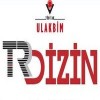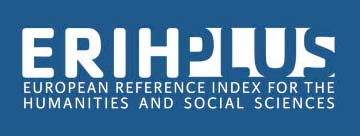Effects of Resveratrol, Caffeic Acid Phenethyl Ester and Silibinin on Isolated Human Umbilical Artery
Abstract
Objective: The aim of this study was to compare the vasoactive effects of resveratrol, CAPE and silibinin on the basal tone and serotonin (5-HT) induced contractile responses of isolated human umbilical arteries.
Material-Method: This study was approved by the Non-Drug and Medical Device Research Ethics Committee (Decision No: 2022̸̸ 3994). In the study, umbilical cord samples separated as medical waste in the Department of Gynaecology and Obstetrics were used. The umbilical cords taken from the middle 1/3 part were brought to the laboratory in cold Krebs-Henseleit Solution (KHS). The arteries isolated from the umbilical cords were cleaned from the surrounding tissues and spirally cut into 2-3x10 mm strips. The strips were suspended in isolated tissue baths filled with 10 ml KHS continuously bubbled with a mixture of 95% O2 and 5% CO2 at 37oC. At the beginning of the experiment, the strips were stretched to an initial tension of 1.5 g and allowed to equilibrate for 60 min in KHS, which was changed every 15 min. At the end of the rest period, responses to the applied agents were recorded isometrically (Commat, Ankara, TURKEY) using a transducer (BIOPAC MP36, California USA).
Effects of resveratrol, CAPE and silibinin on basal tonus in the umbilical artery strips were investigated in first group. After control contraction with 10-6 M 5-HT, the tissues were washed until resting tone was re-established. Concentration-response curves for resveratrol (10-9 M -10-4 M), CAPE (10-9 M -10-4 M) and silibinin (10-9 M -10-4 M) were obtained by cumulative addition to the organ bath.
To evaluate the effects of resveratrol, CAPE and silibinin on 5-HT-induced contraction, the strips were contracted with 10-6 M 5-HT. After maximal contractile response was achieved, increasing concentrations of resveratrol (10-9 M -10-4 M), CAPE (10-9 M -10-4 M) or silibinin (10-9 M -10-4 M) were added cumulatively to the bath.
Results: Resveratrol, CAPE and silibinin did not affect the basal tone of umbilical arteries. 5-HT is a potent vasoconstrictor endogenous agent in umbilical arteries. Antioxidants used in the study produced relaxation responses in arteries precontracted with 5-HT. When the sensitivity of tissues to these agents and their maximum relaxant effects were evaluated together, silibinin was found to be more effective than the others.
Conclusion: The use of antioxidants for support or treatment of complications due to oxidative stress in pregnant women is being investigated. Vasoactive effects of exogenous and endogenous agents are important in the regulation of umbilical vascular tone. Resveratrol, CAPE and silibinin are polyphenol-derived natural antioxidants that have potential use in pregnant women. In our study, the vasoactive effects of these agents on umbilical arteries were investigated.
Keywords: CAPE, In vitro, Resveratrol, Silibinin, Umbilical artery.
Keywords
Ethical Statement
The authors declare that there were no potential conflicts of interest with regard to the research, authorship, and/or publication of this article.
Supporting Institution
Necmettin Erbakan University, Selcuk University
Thanks
We are grateful to Prof. Dr. Osman BALCI and Prof. Dr. Tahir Kemal ŞAHİN for their help and support.
References
- Ramli I, Posadino AM, Giordo R, et al. Effect of resveratrol on pregnancy, prenatal complications and pregnancy-associated structure alterations. Antioxidants. 2023; 12, 341. doi:10.3390/antiox12020341
- Lorigo M, Mariana M, Feiteiro J, Cairrao E. How is the human umbilical artery regulated? Journal of Obstetrics and Gynaecology Research. 2018; 44(7), 1193-1201. doi:10.1111/jog.13667
- Taniguchi K. Vasospastic action of serotonin on the umbilical artery in normal and preeclamptic patients. Journal of Obstetrics and Gynaecology.1995; 21(1), 37-42. doi: 10.1111/j.1447-0756.1995.tb00895.x
- Santos-Silva AJ, Cairrao E, Marques B, Verde I. Regulation of human umbilical artery contractility by different serotonin and histamine receptors. Reproductive Sciences. 2009; 16(12), 1175-1185. doi: 10.1177/1933719109343787
- Bourque SL, Dolinsky VW, Dyck JRB, Davidge ST. Maternal resveratrol treatment during pregnancy improves adverse fetal outcomes in a rat model of severe hypoxia. Placenta. 2012; 33.5: 449-452. doi: 10.1016/j.placenta.2012.01.012
- Singh CK., Kumar A, La Voie HA, DiPette DJ, Singh US. Diabetic complications in pregnancy: is resveratrol a solution? Experimental Biology and Medicine. 2013; 238.5: 482-490. doi: 10.1177/1535370212473704
- Ding J, Kang Y, Fan Y, Chen Q. Efficacy of resveratrol to supplement oral nifedipine treatment in pregnancy-induced preeclampsia. Endocrine Connections. 2017; 6.8: 595-600. doi: 10.1530/EC-17-0130
- Formoso G, Baldassarre MP, Ginestra F, Carlucci MA, Bucci I, Consoli A. Inositol and antioxidant supplementation: Safety and efficacy in pregnancy. Diabetes/Metabolism Research and Reviews. 2019; 35.5: e3154. doi:10.1002/dmrr.3154
- Rakici O, Kızıltepe U, Coskun B, Aslamacı S, Akar F. Effects of resveratrol on vascular tone and endothelial function of human saphenous vein and internal mammary artery. International Journal of Cardiology. 2005; 105.2: 209-215. doi:10.1016/j.ijcard.2005.01.013
- Usman UZ, Bakar ABA, Mohamed M. Propolis improves pregnancy outcomes and placental oxidative stress status in streptozotocin-induced diabetic rats. BMC Complementary and Alternative Medicine. 2018; 18: 1-6. doi:10.1186/s12906-018-2391-6
- Fikri AM, Sulaeman A, Marliyati SA, Fahrudin M, Handharyani E. Effect of propolis on maternal toxicity. Pharmaceutical Sciences Asia. 2021; 48.3. doi:10.29090/psa.2021.03.20.056
- Duman I, Soner BC, Inan SY, Sahin AS. Caffeic Acid Phenethyl Ester (CAPE), active phenolic compound of propolis attenuates endothelin, prostaglandin F2α and U46619 elicited contractions of isolated human umbilical artery. Current Traditional Medicine. 2021; 7.4: 576-583. doi: 10.2174/2215083806999201214160640
- de Alencar Silva A, Pereira-de-Morais L, da Silva RER, et al. Pharmacological screening of the phenolic compound caffeic acid using rat aorta, uterus and ileum smooth muscle. Chemico-Biological Interactions. 2020; 332: 109269. doi:10.1016/j.cbi.2020.109269
- Özcan N, Ikincioğulları D. Annual report of the National Poisons Information Centre for 2008. Journalagent. http://jag.journalagent.com/turkhijyen/pdfs/THDBD_66_3_29_58.pdf
- Baghbahadorani FK, Miraj S. The impact of silymarin on improvement of platelet abnormalities in patients with severe preeclampsia. Electronic Physician. 2016; 8.5: 2436. doi:10.19082/2436
- Soleimani V, Delghandi PS, Moallem SA, Karimi G. Safety and toxicity of silymarin, the major constituent of milk thistle extract: An updated review. Phytotherapy Research. 2019; 33.6: 1627-1638. doi:10.1002/ptr.6361
- Giorgi VSI, Peracoli MTS, Peracoli JC, Witkin SS, Bannwart-Castro CF. Silibinin modulates the NF-κb pathway and pro-inflammatory cytokine production by mononuclear cells from preeclamptic women. Journal of Reproductive Immunology. 2012; 95.1-2: 67-72. doi:10.1016/j.jri.2012.06.004
- de Souza CO, Peraçoli MTS, Well IC, et al. Hepatoprotective and anti-inflammatory effects of silibinin on experimental preeclampsia induced by L-NAME in rats. Life Sciences. 2012; 91.5-6: 159-165. doi: 10.1016/j.lfs.2012.06.036
- Pourová J, Applová L, Macáková K, et al. The effect of silymarin flavonolignans and their sulfated conjugates on platelet aggregation and blood vessels ex vivo. Nutrients. 2019; 11.10: 2286. doi:10.3390/nu11102286
Abstract
References
- Ramli I, Posadino AM, Giordo R, et al. Effect of resveratrol on pregnancy, prenatal complications and pregnancy-associated structure alterations. Antioxidants. 2023; 12, 341. doi:10.3390/antiox12020341
- Lorigo M, Mariana M, Feiteiro J, Cairrao E. How is the human umbilical artery regulated? Journal of Obstetrics and Gynaecology Research. 2018; 44(7), 1193-1201. doi:10.1111/jog.13667
- Taniguchi K. Vasospastic action of serotonin on the umbilical artery in normal and preeclamptic patients. Journal of Obstetrics and Gynaecology.1995; 21(1), 37-42. doi: 10.1111/j.1447-0756.1995.tb00895.x
- Santos-Silva AJ, Cairrao E, Marques B, Verde I. Regulation of human umbilical artery contractility by different serotonin and histamine receptors. Reproductive Sciences. 2009; 16(12), 1175-1185. doi: 10.1177/1933719109343787
- Bourque SL, Dolinsky VW, Dyck JRB, Davidge ST. Maternal resveratrol treatment during pregnancy improves adverse fetal outcomes in a rat model of severe hypoxia. Placenta. 2012; 33.5: 449-452. doi: 10.1016/j.placenta.2012.01.012
- Singh CK., Kumar A, La Voie HA, DiPette DJ, Singh US. Diabetic complications in pregnancy: is resveratrol a solution? Experimental Biology and Medicine. 2013; 238.5: 482-490. doi: 10.1177/1535370212473704
- Ding J, Kang Y, Fan Y, Chen Q. Efficacy of resveratrol to supplement oral nifedipine treatment in pregnancy-induced preeclampsia. Endocrine Connections. 2017; 6.8: 595-600. doi: 10.1530/EC-17-0130
- Formoso G, Baldassarre MP, Ginestra F, Carlucci MA, Bucci I, Consoli A. Inositol and antioxidant supplementation: Safety and efficacy in pregnancy. Diabetes/Metabolism Research and Reviews. 2019; 35.5: e3154. doi:10.1002/dmrr.3154
- Rakici O, Kızıltepe U, Coskun B, Aslamacı S, Akar F. Effects of resveratrol on vascular tone and endothelial function of human saphenous vein and internal mammary artery. International Journal of Cardiology. 2005; 105.2: 209-215. doi:10.1016/j.ijcard.2005.01.013
- Usman UZ, Bakar ABA, Mohamed M. Propolis improves pregnancy outcomes and placental oxidative stress status in streptozotocin-induced diabetic rats. BMC Complementary and Alternative Medicine. 2018; 18: 1-6. doi:10.1186/s12906-018-2391-6
- Fikri AM, Sulaeman A, Marliyati SA, Fahrudin M, Handharyani E. Effect of propolis on maternal toxicity. Pharmaceutical Sciences Asia. 2021; 48.3. doi:10.29090/psa.2021.03.20.056
- Duman I, Soner BC, Inan SY, Sahin AS. Caffeic Acid Phenethyl Ester (CAPE), active phenolic compound of propolis attenuates endothelin, prostaglandin F2α and U46619 elicited contractions of isolated human umbilical artery. Current Traditional Medicine. 2021; 7.4: 576-583. doi: 10.2174/2215083806999201214160640
- de Alencar Silva A, Pereira-de-Morais L, da Silva RER, et al. Pharmacological screening of the phenolic compound caffeic acid using rat aorta, uterus and ileum smooth muscle. Chemico-Biological Interactions. 2020; 332: 109269. doi:10.1016/j.cbi.2020.109269
- Özcan N, Ikincioğulları D. Annual report of the National Poisons Information Centre for 2008. Journalagent. http://jag.journalagent.com/turkhijyen/pdfs/THDBD_66_3_29_58.pdf
- Baghbahadorani FK, Miraj S. The impact of silymarin on improvement of platelet abnormalities in patients with severe preeclampsia. Electronic Physician. 2016; 8.5: 2436. doi:10.19082/2436
- Soleimani V, Delghandi PS, Moallem SA, Karimi G. Safety and toxicity of silymarin, the major constituent of milk thistle extract: An updated review. Phytotherapy Research. 2019; 33.6: 1627-1638. doi:10.1002/ptr.6361
- Giorgi VSI, Peracoli MTS, Peracoli JC, Witkin SS, Bannwart-Castro CF. Silibinin modulates the NF-κb pathway and pro-inflammatory cytokine production by mononuclear cells from preeclamptic women. Journal of Reproductive Immunology. 2012; 95.1-2: 67-72. doi:10.1016/j.jri.2012.06.004
- de Souza CO, Peraçoli MTS, Well IC, et al. Hepatoprotective and anti-inflammatory effects of silibinin on experimental preeclampsia induced by L-NAME in rats. Life Sciences. 2012; 91.5-6: 159-165. doi: 10.1016/j.lfs.2012.06.036
- Pourová J, Applová L, Macáková K, et al. The effect of silymarin flavonolignans and their sulfated conjugates on platelet aggregation and blood vessels ex vivo. Nutrients. 2019; 11.10: 2286. doi:10.3390/nu11102286
Details
| Primary Language | English |
|---|---|
| Subjects | Traditional, Complementary and Integrative Medicine (Other) |
| Journal Section | Research Articles |
| Authors | |
| Publication Date | April 25, 2025 |
| Submission Date | June 8, 2024 |
| Acceptance Date | February 17, 2025 |
| Published in Issue | Year 2025 Volume: 6 Issue: 1 |
IJTCMR
International Journal of Traditional and Complementary Medicine Research





